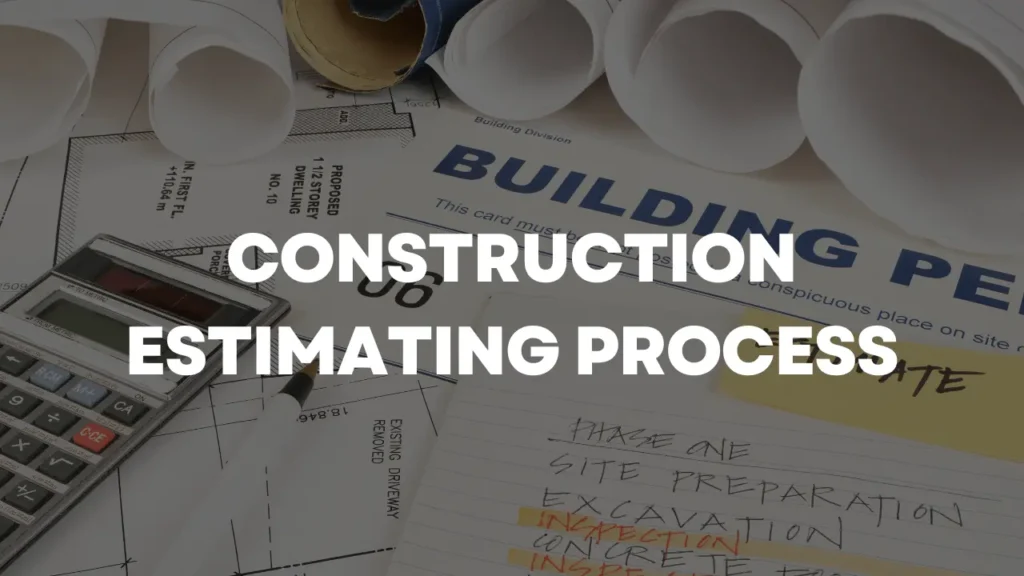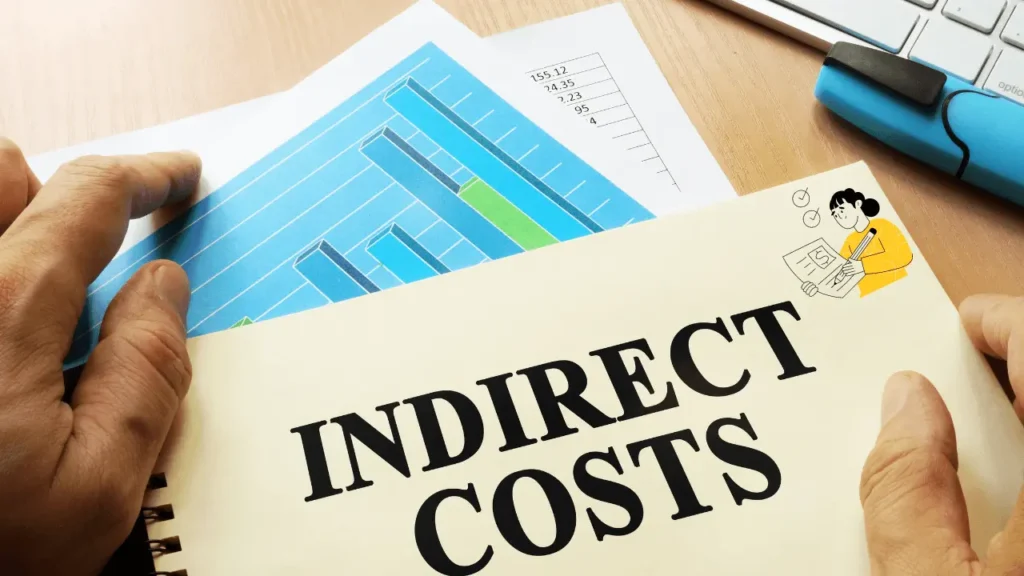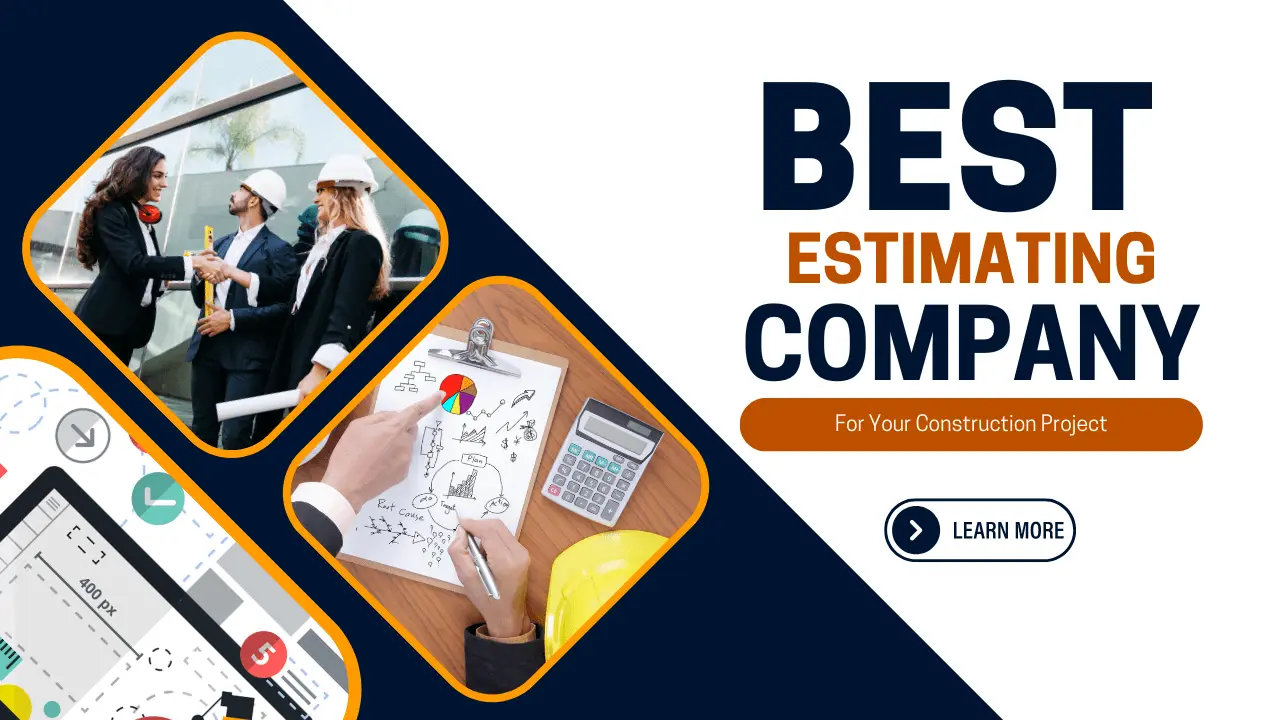For any building project to be successful, accurate construction estimates are essential. This guide covers the five key phases of construction estimating, helping you plan your project costs effectively. If you’re a contractor, project manager, or client, understanding these steps will streamline your construction process. This will ensure that your financial planning is aligned with your project objectives.
The construction estimating process includes project initiation, quantity takeoff, pricing, bid submission, and project cost control. During project initiation, the scope and objectives of the construction project are defined. In the quantity takeoff phase, the quantities of materials, labor, and equipment required for the project are determined. Pricing involves assigning costs to each item and activity in the project.
Bid submission is submitting a cost estimate to the client or owner. Finally, project cost control involves monitoring and managing the actual costs during the construction process to ensure they align with the estimated costs. Cost control is an important part of the project management process, as it helps to ensure that the project is delivered on time and within budget. It also helps to identify any areas where costs might be saved, and any potential risks that may arise.

Explore this Article
Construction Estimating Process in Five Phases
The construction estimating process can be broken down into five phases. Each phase plays a crucial role in accurately estimating construction costs. In this step-by-step guide, we will explore each phase in detail, providing you with the knowledge and tools necessary to calculate construction costs effectively.
1: Project Review and Information Gathering

As a first step, it is important to thoroughly understand the scope, requirements, and potential challenges of the project. The process includes reviewing project plans, conducting site visits, consulting with stakeholders, and gathering information concerning materials, labor rates, and equipment rentals. Some potential challenges that may arise during the project include unexpected delays in material deliveries, changes in project requirements, and unforeseen site conditions that could impact the timeline and budget. It is essential to anticipate these challenges and have contingency plans in place to mitigate their impact
2: Quantity Takeoff

You’ll need to break the project down into individual components like concrete, lumber, and wiring. Measure things and use software to calculate quantities. Make sure you take into account waste, overages, and rework. When measuring project components, it’s important to use accurate and precise tools such as measuring tapes or laser distance meters. Take detailed notes and photographs to document your measurements for future reference. Additionally, consider using digital software or apps specifically designed for quantity takeoffs to streamline the process and minimize errors. Materials and labor required are compiled from this detailed takeoff.
3: Cost Estimation

Cost each item based on the quantity takeoff, creating a detailed estimate. Consider taxes, fees, and transportation costs when researching current market prices for materials and labor. A detailed estimate is essential in cost estimation as it allows for accurate budgeting and planning. It helps to identify potential cost overruns, enables effective negotiation with suppliers, and provides a clear understanding of project feasibility and profitability. Don’t forget to factor in price fluctuations.
4. Indirect Cost Estimation

Costs are not directly tied to materials or labor but are necessary for a comprehensive project budget. Estimate overhead expenses, project management, and supervision costs, contingency costs for unforeseen events, and profit margins. Examples of overhead expenses in construction projects include rent for office space, utilities such as electricity and water, insurance premiums, equipment maintenance and repairs, marketing and advertising expenses, and salaries for administrative staff. If you include these indirect costs in your project budget, you’ll get a more accurate result.
5: Review and Refinement

All calculations and assumptions have to be thoroughly checked in the final phase. Make adjustments based on feedback from colleagues and industry experts, and compare the estimate to similar projects. This important step is necessary to ensure that the project is completed on time and within budget. It also helps to identify any potential risks or issues that may arise during the project. Checking all calculations and assumptions also helps to ensure that the project is completed to the highest standard. By doing this, you can make sure the estimate is accurate, comprehensive, and well-documented.
Conclusion
It takes careful planning, detailed analysis, and clear communication to do an accurate construction estimate. By following these five phases, you can ensure your estimates are precise, your bids are competitive, and your projects are set up for success. Careful planning in construction estimates helps to minimize the risk of cost overruns and delays, as well as ensure that projects are completed within budget and on time. According to a study by the Construction Industry Institute, projects that undergo thorough planning and estimation have a significantly higher chance of success compared to those that do not. Each phase is crucial to building client trust and securing profitable contracts.
Construction Estimation Process FAQs
The estimation process usually involves: 1) Estimate Preparation, 2) Takeoff/Quantity Survey, 3) Extension and Review, and 4) Bid Summarization.
It begins with gathering project details, then meticulously measuring quantities, applying costs, considering risks, and finally presenting a clear estimate.
The steps are: 1) Project Review, 2) (Optional) Site Visit, 3) Quantity Takeoff, 4) Pricing, 5) Cost Calculation, 6) Overhead & Profit, 7) Contingency, 8) Review & Verification, and 9) Bid Preparation.
Common techniques include Unit Cost Estimating, Factor Estimating, Parametric Estimating, Stick Estimating, Assembly Estimating, and Model-Based Estimating.






